Women's Sexuality and Modern India: In a Rapture of Distress Amrita Narayanan
https://ebookmass.com/product/womens-sexuality-and-modern-india-in-arapture-of-distress-amrita-narayanan/
ebookmass.com
Bernard Shaw, Sean O’Casey, and the Dead James Connolly Nelson O’Ceallaigh Ritschel
https://ebookmass.com/product/bernard-shaw-sean-ocasey-and-the-deadjames-connolly-nelson-oceallaigh-ritschel/
ebookmass.com
Life C1 Advanced 2nd Edition Paul Dummett
https://ebookmass.com/product/life-c1-advanced-2nd-edition-pauldummett/
ebookmass.com
Work on Your Game: Use the Pro Athlete Mindset to Dominate Your Game in Business, Sports, and Life Dre Baldwin
https://ebookmass.com/product/work-on-your-game-use-the-pro-athletemindset-to-dominate-your-game-in-business-sports-and-life-dre-baldwin/
ebookmass.com
Wolf to the Rescue Terry Spear
https://ebookmass.com/product/wolf-to-the-rescue-terry-spear-3/

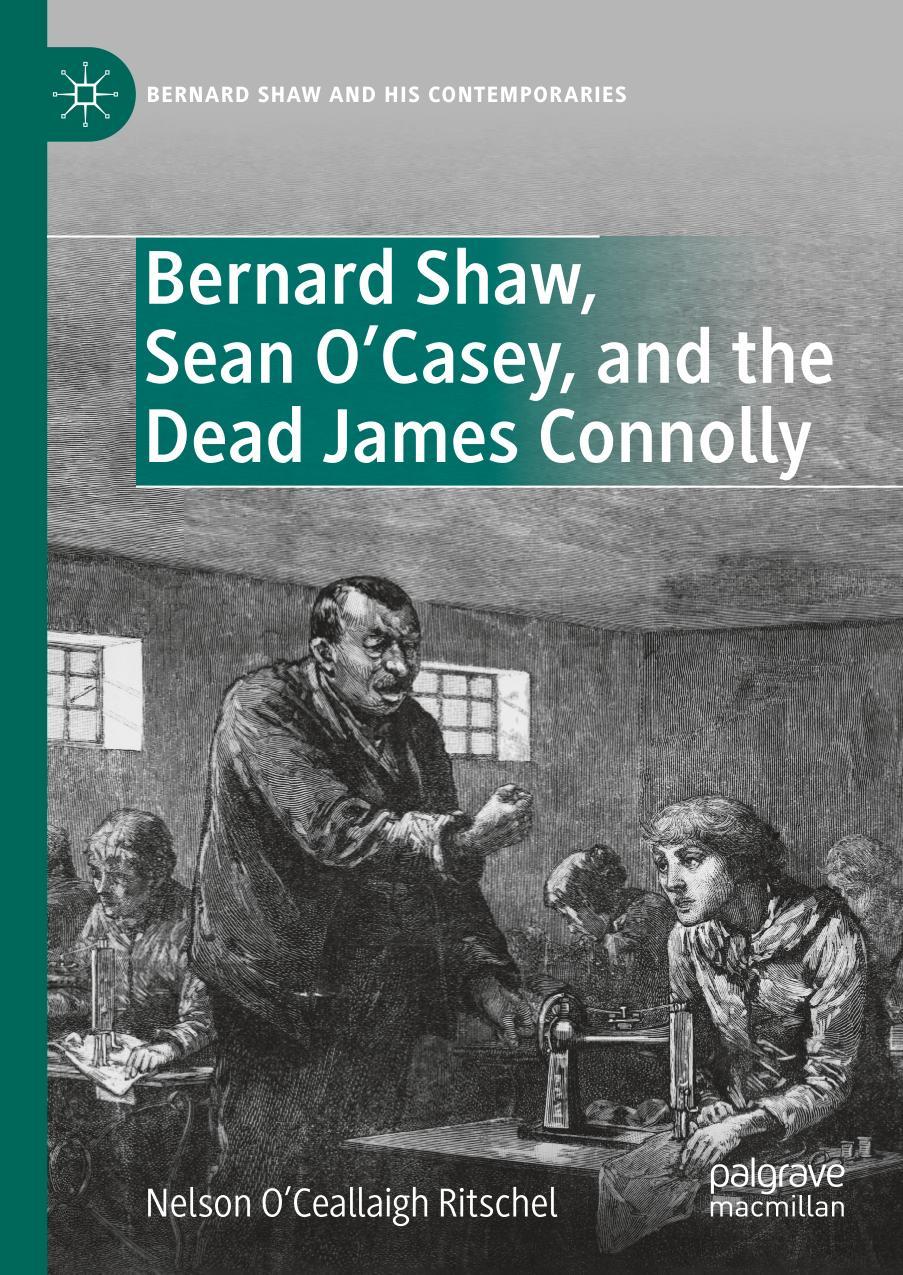
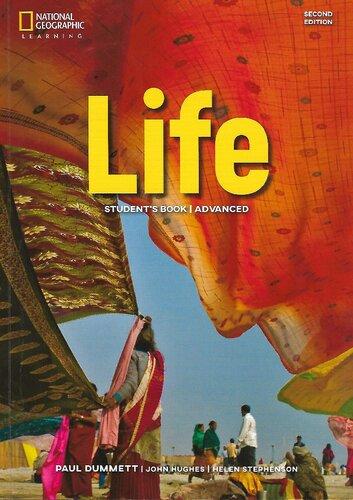
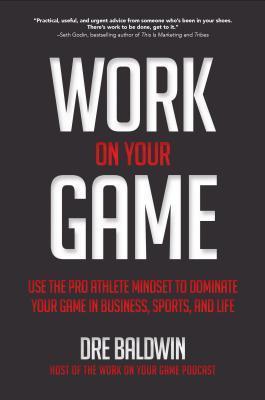

ebookmass.com
https://ebookmass.com/product/the-panda-of-death-betty-webb-2/

ebookmass.com

and detailed guidelines for conducting interventions, grounded in the PEO and recovery models and reflecting these points of consideration:
♦ PEO focus for the intervention
♦ Mindful theme that names and frames the session
♦ Required actions within the craft that point to an appendix of related skills and functions
♦ A cue to formulate client-specific skill-building goals
♦ Mindful goals for the intervention
♦ Introduction that sets the stage for a mindful session
♦ Questions or exercises that prompt personcentered reflection on the mindful theme
♦ Identification of tools and supplies (and patterns if needed)
♦ Sequential instructions directed at the participant
♦ Troubleshooting tips that alert practitioners to potential challenges
♦ Comments to foster reflection during quiet moments
♦ Suggestions for an interactive conclusion
♦ Variations possible when planning the session
The learning-by-doing craft chapters. All six craft chapters are designed to be used by readers, whether students or practitioners. Distinctions between the two complementary craft chapter types within each section are these:
Chapters 6, 8, and 10 with interwoven reflections
♦ The typical time for conducting each session is 60 minutes. Some interventions may require more than one session.
♦ In these sessions, most didactics and clientcentered reflections are informal and woven into the intervention. This format accommodates clients for whom formal written work and discussion might be overly challenging or distancing. For clients preferring more formal learning strategies, practitioners may formalize this interwoven work into written exercises and discussion periods, as seen in Chapters 7, 9, and 11.
Chapters 7, 9, and 11 with preparatory reflections
♦ The ideal time for conducting the full session is 90 minutes. All interventions take one session.
♦ During the first 30 minutes of these sessions, clients complete a written didactic or reflective exercise and engage in a brief discussion. This
format appeals to those seeking educational content in occupational therapy. If practitioners prefer 60-minute sessions, they may invite clients to complete the written exercise before the session. Additionally, both the exercise and discussion may be transformed into interwoven work, as seen in Chapters 6, 8, and 10.
The Appendices
Expedite key functions. The appendices can prompt a swift implementation of the mindful crafts in this book while helping practitioners to easily generalize a process that will make many other crafts mindful.
Appendix A: Broad Required Actions With Performance Skills and Body Functions
Analyze potential. This appendix is the outcome of an analysis of all of the actions required during completion of the crafts in this book. Forty required actions, such as cut with scissors and stir liquid, were then further analyzed to specify their demands on performance skills and bodily functions. Practitioners can use this resource to consider and tap the therapeutic potential of crafts.
Appendix B: Modifications to Address Challenges With Required Actions
Meet client needs. Alongside the actions required by the crafts in this book, this appendix notes various modifications that enable client performance. This logical and imaginative resource can guide practitioners in making adjustments to accommodate client difficulties with process, motor, and social interactional skills and sensory as well as emotional functions.
Appendix C: Analysis of Distribution of Required Actions for Crafts in This Book Organized by PEO Themes
Capture purpose and meaning. This index identifies at a glance some 5 to 20 actions required by each mindful craft, depending on its complexity. The organization of the index highlights themes from the PEO model that imbue crafts with meaning: person (self-concept and self-determination), environment (physical, social, and societal and cultural), and occupation (self-maintenance, self-fulfillment, and self-expression). Using this resource, practitioners can readily choose interventions with purposeful actions and meaningful themes.
Appendix D: Actions and Skills Tapped by CraftRelated Housekeeping Tasks
Enable adjunct occupations. Part 1 of this resource examines the demands of several daily living tasks such as wipe surfaces clean and deposit trash in receptacle that
Janeene Sibla, OTD, OTR/L
Occupational Therapy Program Director and Professor
Occupational Therapy
University of Mary Bismarck, North Dakota
Barbara Ellen Thompson, OTD, LCSW, OTR/L, CAGS
Professor
Department of Occupational Therapy
The Sage Colleges Troy, New York
Callie Schwartzkopf, OTD, OT/L
Associate Professor
Occupational Therapy
College of Saint Mary Omaha, Nebraska
JoAnne Wright, PhD, OTR/L, CLVT
Professor (Clinical)
Division of Occupational Therapy
University of Utah Salt Lake City, Utah
Heed Administrative Directives: Evidence, Documentation, and Finances 99
Pathways to Abundant Resources 115
Secure Supplies: Starter Kits, Discards, and Bright Ideas 115
Secure Places and Spaces: Organization and Improvisation 119 Summary 124
Chapter4: Establishing Readiness for Practice 127
PART 1: Resources That Lead to Readiness 128
Resources: The Purposeful Core of Crafts 128
Resources: The Meaningful Core of Interventions 142
PART 2: Photographs of Modifications 157
PART 3: Practice Challenges That Develop Readiness 160
4-1 Analyze Three Crafts and Select the Best One—Bipolar Disorder 160
4-2 Record Observations and Suggest Modifications— Developmental Delay and Low Vision in a Young Woman 169
4-3 Grade Task and Environmental Supports—Deconditioned Status 171
4-4 Identify Client Interests and Therapeutic Crafts—Outpatient Group for a Variety of Conditions 175
4-5 Consider Safe Practice in a Restricted Environment—Conduct Disorder in a Teenaged Boy 177
4-6 Resubmit a SOAP Note for Reimbursement—Postsurgical Hand and Posttraumatic Stress Disorder 179
4-7 Lead or Co-Lead a Mindful Craft Group 181
on the Challenges 182
Chapter5: The Evidence That Supports Crafts
to Date on Mindful Crafts 196
of Satisfaction and Engagement 196
Among
Crafts With Interwoven
Mixed Emotions—Identifying Internal Conflict
Knock, Knock. Who’s There? Inside/Outside Emotions
Treasure Boxes—Value Clarification
6-6 What’s Your Superpower? Adventures in Life
With the Person in Mind: Self-Determination
Layers—Reflecting on Personal
Get Real—Telling My Story
Review, Appraise, Plan—Past, Present, Future
Totem Fetishes—Character Strengths and Aspirations
What’s in Your Wallet?
Refocusing, Letting Go, Moving On—Recycling Unpleasant Memories
Chapter7: Crafts With Preparatory Reflections on Personal
7-1 Having a Positive Sense of Self
7-2 Scratching Past the Surface
7-3 Amazing Grace
7-4 Windows Into the Soul
7-5 Taking a Lighthearted Perspective
7-6 Taking Pride in Being or Honoring a Real Woman
7-7 Taking Pride in Being or Honoring a Real Man
7-8 Spring Holiday Reflections About Recovery
7-9 Winter Holiday—Joy
7-10 Reinventing the Self
7-11 Having Purpose and Motivation
7-12 Transformations in Life
7-13 Pieces to Peace
7-14 Spring Holiday—What Are You Hatching?
7-15 Holding on to Friendship
approach transparent. We share a practice of deep understanding, logical analysis, and imaginative synthesis. We showcase mindful crafts. Our bottom line is this: You can make crafts work.
Your Turn 1-1
Look at Figure 1-1. Before reading any further, write within each loop in the figure a number from 1 to 5 (with 5 indicating very familiar and 1 not so familiar) to answer this question: What number would you use to rate your familiarity with each of the three dimensions of mindfulness named in the figure? If, for example, you think that you are somewhat familiar with logical activity analysis, you might write the number 3 within that loop.
Mindfulness and Mindlessness
We turn to a discussion of mindfulness because we believe that framing occupational therapy interventions in terms of mindfulness awakens us to vital functions of practice. We believe that we are at risk of being pulled or lulled into mindlessness in today’s health systems. Our aim is not to flaunt a trendy term but to deeply consider the grounding in mindfulness that the best of occupational therapy has always been.
Mindfulness Defined, Described, and Illustrated
Definitions of mindfulness and its opposite are important preludes to a discussion of mindlessness in health care. The term mindful is defined as “attentive, aware, and careful.” Synonyms include “heedful,” “thoughtful,” and “regardful.” When we hear the term mindless, we rightly deduce that inattentive, unaware, and careless apply. The dictionary notes that heedless, thoughtless, and disregardful also fit.
Mindfulness, then, means being attentive to, aware of, and careful about something—some idea, function, or person. Mindfulness helps us to do safely and well the things that we choose to do. See Figure 1-2 for one of those things.
We all claim to be dutifully mindful. We likewise admit that mindlessness “happens.” Consider driving. Complex enough to warrant a license and dangerous enough that criminal charges attach to recklessness, driving can occur mindlessly. Long stretches of highway can pull us from active driving. Suddenly “brought back” from musing about other things, we fear we’ve passed our exit. So skilled are most of us at steadying the wheel and checking the mirrors that we drive a two-ton vehicle on autopilot.

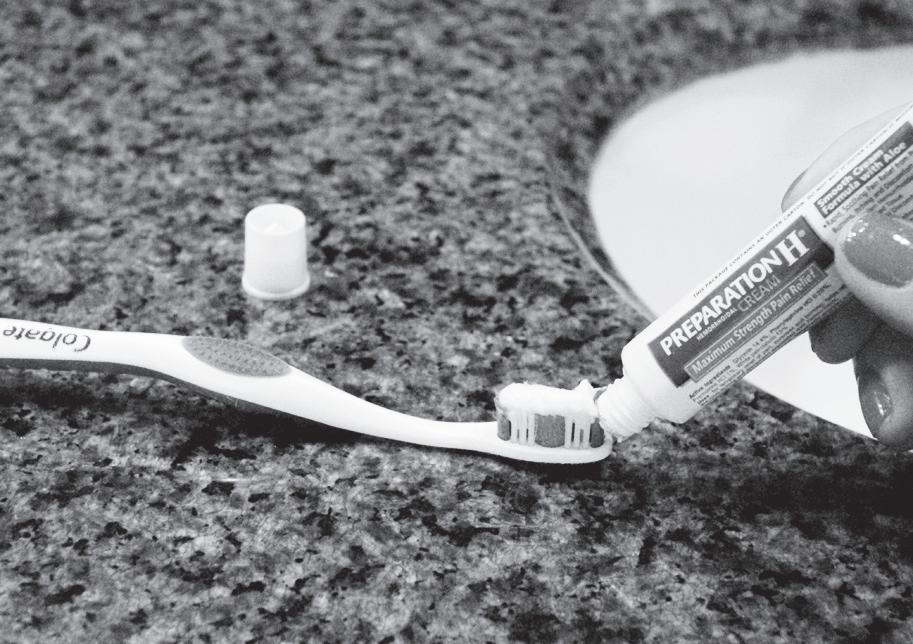
Your Turn 1-2
Identify an activity other than driving during which you find yourself acting on autopilot. Which, if any, adverse consequences can follow?
Most are less attentive during basic self-care. The precise steps and motions in applying deodorant or tying shoes all move to the background until some occupational challenge thwarts their attempt. As occupational therapy practitioners, we stay mindful of daily activities, aware of their demands and dimensions. Others turn to us for help because we heed the realm of daily performance, staying mindful on their behalf.
See in Figure 1-3 the result of a mindless moment.
Mindfulness, then, is the adaptive state of being attentive and aware. It allows us to do carefully whatever we need to do. Fables and fairy tales portray mindfulness in ways that move past its value in daily activities into matters of life and death. Little Red Riding Hood (Lang, 1891) and a later rendition called The Little Girl and the Wolf (Thurber, 1939) offer contrasting views.
Little Red Riding Hood features a young girl setting out with a basket of goodies to take to her sick grandmother. Along the way, she meets and chats with a wolf, mindlessly disclosing to him her destination. This Big Bad Wolf takes his leave of the girl and lopes ahead to make a satisfying if hurried meal of the grandmother. Astute wolf that he is, he sees in the approach of the child a chance for a second meal. He dresses in granny’s bedclothes, slips into her bed, and greets the girl. She exclaims over oddities in the wolf’s voice and features, heedless of their meaning. Her last comment,
“Grandmother, what big teeth you have,” elicits a deadly response. Mindlessness can be deadly.
James Thurber’s fable, The Little Girl and the Wolf (1939), introduces a young girl of a different ilk. Thurber takes liberties with Lang’s tale:
She had approached no nearer than twenty-five feet from the bed when she saw that it was not her grandmother but the wolf, for even in a nightcap a wolf does not look any more like your grandmother than the Metro-Goldwyn lion looks like Calvin Coolidge. So the girl took an automatic out of her basket and shot the wolf dead. (p. 5)
The moral of Thurber’s story is this: “It is not so easy to fool little girls nowadays as it used to be” (Thurber, 1939, p. 5). Mindfulness can save us.
Most of us can point to bodily nicks and scars, evidence of mindless moments turned unsafe. Mindlessness can hurt feelings, too. Read what author May Sarton (1988) had to say about her experience at a hairdresser’s:
While Donna was securing my hair into curlers, an old lady who was waiting to be picked up came and stood beside us and talked cheerfully about herself and her daughters and Donna responded. It was as though I did not exist, was an animal being groomed. (p. 235)
Sarton felt disregard when her hairdresser attended to another. In similar circumstances, some of us might feel the same. Others of us might feel no dismay and take our thoughts elsewhere. Perceptions of mindlessness as rude can differ.
Your Turn 1-3
Would the behavior described by May Sarton bother you if you were at the hairdresser’s or barber shop? Explain.
We’ve established our familiarity with mindfulness and its opposite. Two more points of discussion seem salient: the absorbed state that mindfulness can cause and the mindfulness revolution.
Absorption
First, consider the deep absorption that mindfulness can produce. Psychologist Mihaly Csikszentmihalyi (1990) named this positively energized state flow. He described flow as an intense mental state when one

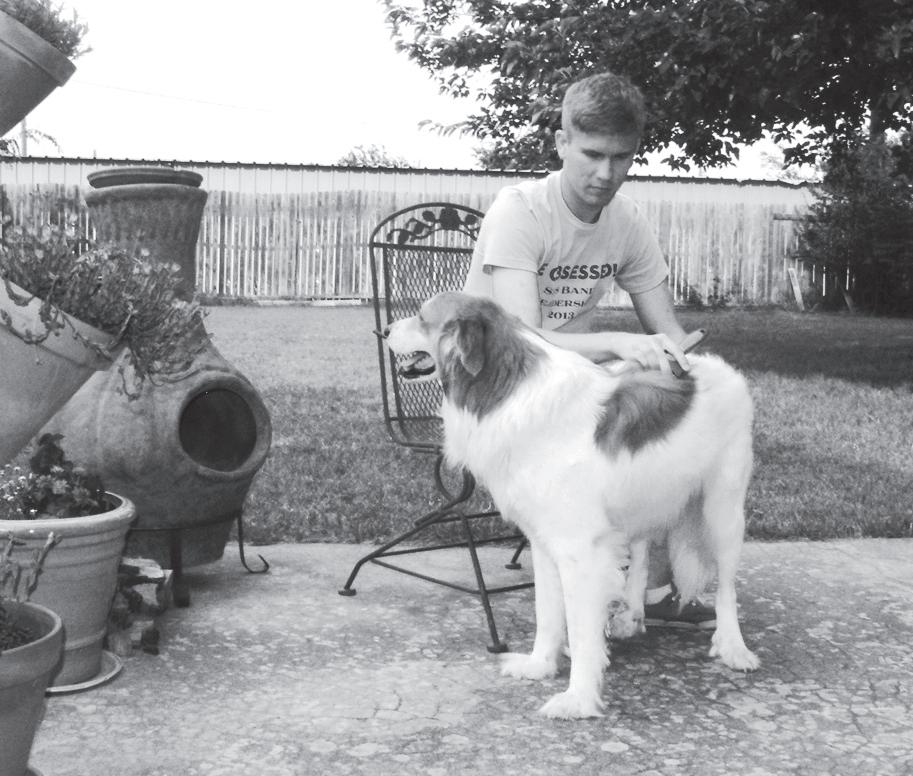
Time spent in simple stitching or sanding can be restful steps in craftwork. We note this calmly absorbed state alongside that of flow because they both affect our well-being in time. If Csikszentmihalyi’s flow is like being swept away in time, restful absorption is like a gentle floating. Bays (2011) described the floating well: “The mind needs rest, too. Where it finds rest is in the present moment, where it can lie down and relax into the flow of events” (p. 6).
engages in a just-right challenge. Some ignore food or drink when in flow. Flow can occur with artwork, sports, or playing an instrument (Fig. 1-4). The sense of being swept away on water led to the naming of flow. Passive activities cannot elicit flow; they evoke boredom or anxiety (Csikszentmihalyi, 1975). Many of our clients can name activities that absorb them, and we should stay mindful of these. If we strive to occupy our clients, we should be skeptical of methods that are downright boring.
What can we say about an activity that, although still absorbing, tends to calm us? Such engagement is mindful in that we stay present to the activity, but the mental state is not intense. We often switch from intense tasks to those that tax us less. Some call these “mind-flushers.” Benefits can follow an easy mindfulness that diverts us from stress and pain. We bristle when others call occupational therapy diversional. Our work, we say, is therapeutic. But diversion can be therapeutic. Removal from anxiety about the future or sorrow over the past offers a healthy reprieve. Individuals find reprieve in different tasks, from tidying shelves to grooming pets (Figure 1-5).
The mindfulness revolution
A second point about mindfulness seems important to our discussion: the mindfulness revolution. Strategies for achieving mindfulness fill the psychological literature as part of healing and living well (Boyce, 2011). The practice of mindfulness derives from Eastern philosophies and from cognitive behavioral therapy (Boyce, 2011). Prompts from this practice, such as staying in the moment and living life to its fullest, align well with occupational therapy. All of this merit aside, our focus is neither on the mindfulness revolution nor in trying to prompt a meditative state. Rather, our view of mindfulness targets the common view of attentiveness, awareness, and care in using occupations that has characterized best practice since our inception. We target the construct because the challenges to stay mindful nowadays are on the rise, particularly in health care.
Mindlessness in Health Care
We see mindfulness as the force behind best practice. We especially note the need to be mindful of the persons who seek our care. Currents in care systems shape an
Occupational therapy was meaningless rote, Kailes’ grasp of its purpose notwithstanding.
In the face of such stories, we must ask: Have occupational therapy interventions become like mindless driving on familiar highways? Are we so skilled in routine methods that we intervene on autopilot? Do we ask the same questions and use the same methods without seeing diverse preferences, unique needs, and wide-ranging goals? Or have we been swept into mindless currents in health care? Do we narrow the depth and scope of our practice when pressed to first and foremost fix problems, honor protocols, and rack up productivity? Do our expertise and institutional bottom lines trump patients’ needs? Does our daily practice pull us from caring?
Thankfully, mindful occupational therapy has always occurred and sometimes using a craft. Therapist Betty Baer (2003) introduced us to J., a Vietnam veteran with a high-level spinal cord injury (SCI). J. lived in a remote part of Texas and called himself a “Mountain Man.”
Self-conscious about a tracheotomy scar, he wanted a beaded choker. Unable to bead because of paralysis, he and his therapist made this plan: Because J. had to direct his caregivers well, Baer proposed that he design a necklace and tell her how to bead it, step by step. She later wrote:
Our View 1-1
This was a big challenge to both of us. ... To our mutual amazement, the choker ... looked great. J. wore it with pride and received many compliments. This activity not only transformed a handful of beads into a necklace, but it also transformed J.’s role from a passive patient to an active teacher. It was a truly wonderful experience ... one I will never forget. (p. 5)
The Understanding That Empowers Occupational Therapy
Earlier we laid out the mindfulness that makes interventions “work.” We noted that we must start with deep understanding. Here we explore the dimensions of the understanding that we must have. Understanding is a full appreciation; it is a hard-earned familiarity. When we understand, we comprehend or grasp things comprehensively. Understanding moves us past knowing to really getting.
Recall the three dimensions of understanding that occupational therapy practitioners need:
1. We must understand persons, their occupational natures, and the unsettling disruptions that
Feedback on Your Turn Responses to Mindfulness and Mindlessness
1-1: The numbers that you wrote on this figure will vary depending on your experiences, whether in school or in practice. Our hope is that after reading this chapter, any low numbers will increase. Come back to check these numbers when you finish the chapter!
1-2: Most responses to the question of when you become mindless will mention familiar activities or ones that are simple or repetitive. You may have mentioned basic activities of daily living or leisure tasks, but it’s not unusual to go into autopilot during instrumental activities of daily living (such as driving) or educational and work activities (such as sitting in long lectures).
1-3: Whether you might feel offended by this hairdresser or a barber will vary depending on your expectations, your
personality, and your comfort with receding quietly into the background. May Sarton felt that she should have been acknowledged. A simple introduction might have pleased her.
1-4: We hope that you can recall many caring experiences in health care. Usually, descriptions of caring experiences include caregiver attitudes and behaviors that convey respect, consideration, and understanding. Having been heard makes a large impression.
1-5: We’re pleased if you thought of a suggestion to foster this young therapist’s mindfulness of her patient’s needs. For our view of how this conversation might have gone, read our reframing of the exchange in the section on Understanding Ourselves (p. 14).
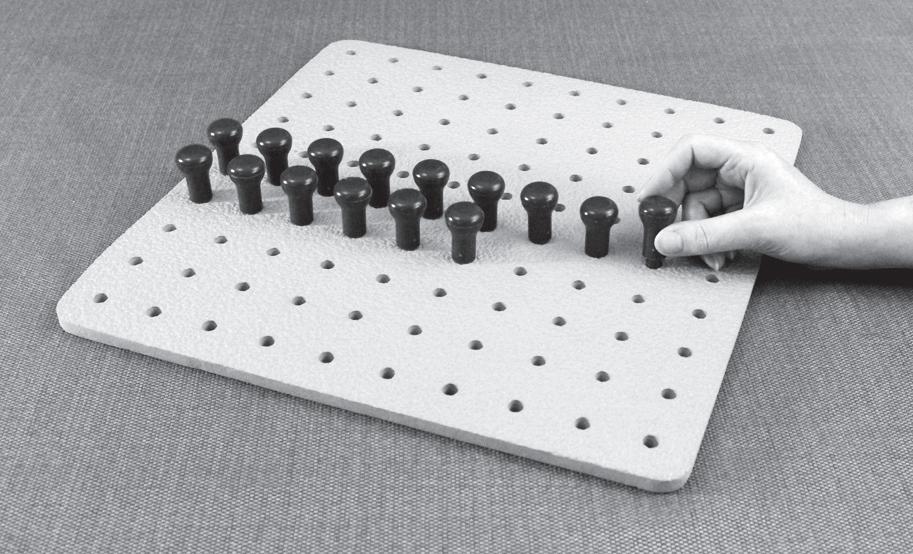
enact that genius in our time, we reclaim our heart (Peloquin, 2005).
Insights From Holistic
Person-Centered Models: Person-Environment-Occupation and Recovery

Drawing Our Past Forward 1-1
The Curative Principles of Occupational Work
William Rush Dunton, Jr., was one of the founders of the National Society for the Promotion of Occupational Therapy (NSPOT) who became its president at its Second Annual Meeting in 1918. A psychiatrist by profession, Dunton was prolific in writing about his new profession. He identified nine principles that he thought essential to occupational work, whether to restore physical or mental functioning (Dunton, 1919). The principles were these:
1. The work should be carried on with cure as the main object.
2. The work must be interesting.
3. The patient should be carefully studied.
4. One form of occupation should not be carried to the point of fatigue.
5. It should have some useful end.
6. It preferably should lead to an increase in the patient’s knowledge.
7. It should be carried on with others.
8. All possible encouragement should be given the worker.
9. Work resulting in a poor or useless product is better than idleness. (p. 320)
We find it notable that the use of mindful crafts almost a century later still honors these principles to a great extent.
Our understanding of occupational therapy must press further than “getting” our guiding beliefs. If we seek to implement those beliefs in ways that work well, we must act on them. We must understand action-oriented principles drawn from holistic and person-centered models. Such principles set the scope and direction for best practice. Holistic models set our scope of concern wide, capturing the richness of persons as occupational beings. And person-centered models direct us to see our clients as experts in framing their needs. We discuss two models: The Person-Environment-Occupation (PEO) model (Law, Cooper, Strong, Stewart, Rigby, & Letts, 1996) and the recovery model (Deegan, 2001; Onken, Craig, Ridgway, Ralph, & Cook, 2007). Both embrace holism; both center on clients as primary agents.
Understanding the person-environment-occupation model
The PEO model captures the fullness of persons as “composites of mind, body, and spiritual qualities” (Law et al., 1996). The model further considers the influences outside of persons that shape everyday doing—the occupation itself as well as the environment within which performance is expected. Because the model includes the richness and complexity of personal performance, it is holistic.
When in an analytical frame of mind within this model, we can tease the discrete ways in which the person (P), environment (E), and occupation (O) shape any performance. We might call each of the three components, whether P, E, or O, an agent—a person or thing that brings about a result. In this case, the result is performance of an occupation. The PEO model proposes that person, environment, and occupation have a relationship that is transactive, meaning built on mutual agency. Any performance is “the outcome of the transaction of the person, environment, and occupation” (Law, et al., 1996, p. 16).
Let’s consider the PEO transaction further. Consider P and E and O as influential agents, each with potential for hindering or supporting occupational performance. One observable performance—successful hammering of a nail—seen in its complexity, might be this: Chuck
